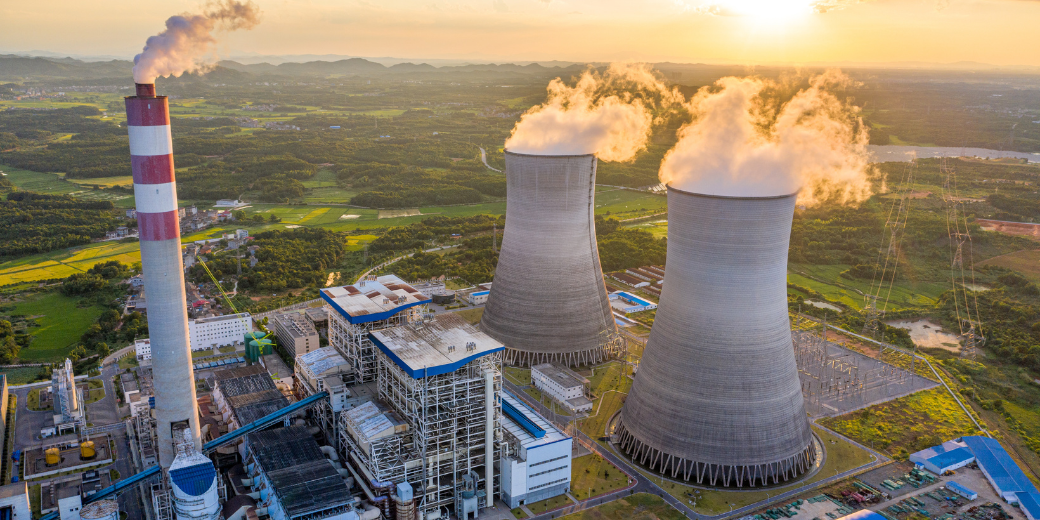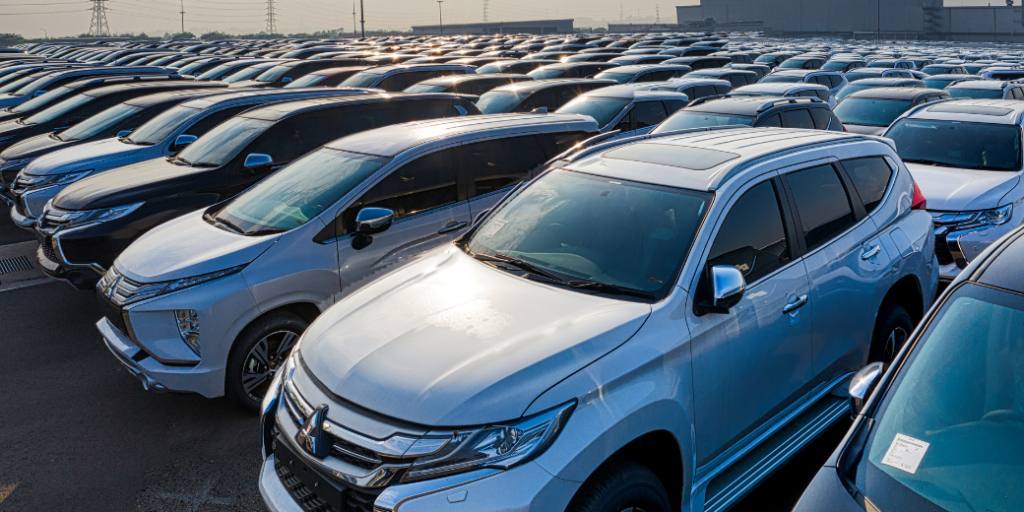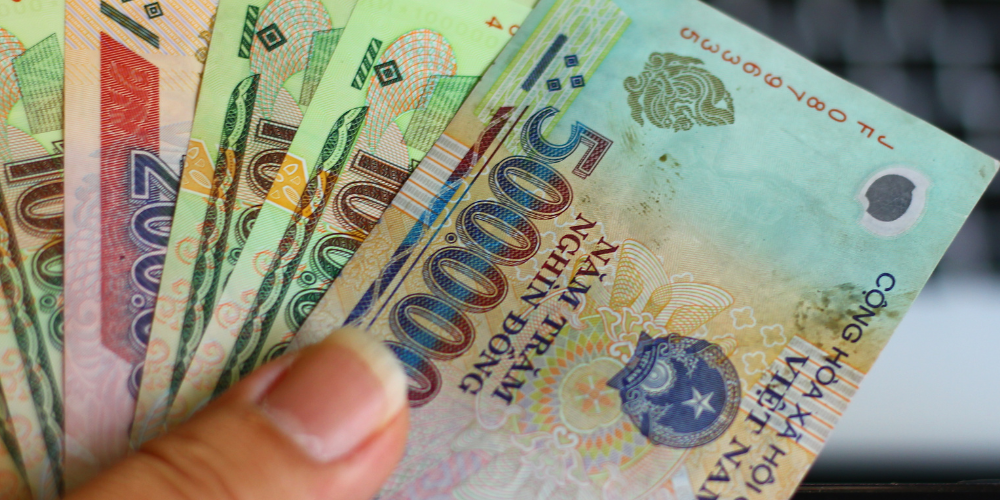Báo cáo ngành
Electricity – Thermal and Nuclear Power Industry in ASEAN

Summary
Get insights into global and ASEAN-6 energy trends. From thermal to renewables, see how nations tackle the energy transition.
Coal and Gas Still Dominates Global Power Generation, Despite Renewables Push for Decarbonisation
Thermal and nuclear power remain critical in meeting global energy demand. Coal is the largest fuel source, accounting for around 36% of global power, followed by gas at 23% and nuclear at 9%. Despite the expansion of renewable energy, coal-based power generation continues to grow, particularly in China and India, which contribute over 55% and 14% of global coal generation, respectively. The US leads in gas-powered electricity, contributing 27% to the global total. Although growth has slowed, natural gas remains a crucial transitional fuel for many regions. Meanwhile, nuclear power’s share has declined since 2000, but it still plays a key role, especially in the US, China, and France. However, the industry faces increasing pressure to decarbonize, and power companies are steadily shifting towards renewable energy to reduce emissions.
ASEAN-6 Countries Rely on Thermal Energy, While Pushing for Renewables to Drive Energy Transition
The ASEAN-6 countries display varying trends in their thermal and nuclear energy sectors as they navigate energy transitions. Indonesia remains heavily reliant on coal, with coal-fired power plants contributing 62% of electricity in 2022, though the government is pushing for more renewables. Malaysia similarly relies on coal and natural gas, with thermal energy comprising 81% of power generation in 2023. In Singapore, natural gas dominates, accounting for 95% of electricity production, with nuclear energy unlikely to play a significant role. Thailand’s energy sector is also primarily driven by natural gas, though renewables have been increasing, reflecting the government’s focus on sustainability. Vietnam continues to depend on coal, the largest energy source at 39%, but is moving towards liquefied natural gas (LNG) and renewables to meet growing demand. Across the region, thermal energy remains dominant, though there are ongoing efforts to increase the share of renewables and reduce carbon emissions.
![]() Indonesia
Indonesia
Indonesia’s Coal Dependency Faces Pressure as Renewable Energy Transition Gains Momentum
Thermal energy dominates Indonesia’s power generation, primarily due to its abundant coal resources. However, the government is striving to transition away from coal despite the economic benefits, aiming to increase the use of renewable energy in the country’s energy mix.
In 2022, Indonesia produced around 333 terawatt hours (TWh) of electricity, with coal-fired power plants (CFPPs) contributing 62% of this total. Indonesia’s heavy reliance on coal ensures energy independence, but this conflicts with global decarbonisation goals. Efforts are underway to reduce coal dependency through initiatives like the Just Energy Transition Partnership and early retirement of CFPPs, supported by the Asian Development Bank’s Energy Transition Mechanism (ETM).
Indonesia’s renewable energy share remains modest, at around 20% of total electricity generated in 2022. Despite the country’s potential for renewable energy development, growth has been slow, with targets set to increase the renewable share to 23% by 2025 and 31% by 2050.
Perusahaan Listrik Negara (PLN), a state-owned utility, plays a dominant role in the Indonesian power market, controlling much of the generation, transmission, and distribution. Alongside PLN, independent power producers (IPPs) like Paiton Energy and Cirebon Electric Power contribute significantly to the power supply, particularly in Java.
 Malaysia
Malaysia
Natural Gas and Imported Coal Dominate Malaysia’s Thermal Energy Mix as Renewables Slowly Rise
Thermal energy continues to dominate Malaysia’s power generation sector, though the country is increasingly focused on shifting towards sustainable energy sources. In 2023, thermal energy, led by coal and natural gas, accounted for approximately 81% of Malaysia’s electricity production. While natural gas plays a significant role due to Malaysia’s reserves, the country remains dependent on imported coal. Although nuclear power has been explored, it has not contributed to the energy mix due to concerns over safety, waste management, and economic viability.
Malaysia aims to diversify its energy sources and reduce its reliance on fossil fuels. The government has set ambitious targets, including sourcing 70% of its energy from renewables by 2050, as part of a broader coal phase-out strategy that plans to retire coal-fired plants by 2044.
Renewable energy’s share in Malaysia’s generation mix has been rising, increasing from 9% in 2013 to 19% in 2023. This shift is driven by the government’s efforts to reduce thermal energy reliance and support cleaner energy alternatives like solar, biomass, and waste-to-energy projects. Natural gas is also expected to play a significant role in Malaysia’s energy transition, with plans to increase its share in the energy mix and boost liquefied natural gas (LNG) imports.
The electricity generation landscape in Malaysia includes both state-owned companies and independent power producers (IPPs). State-owned Tenaga Nasional Berhad (TNB) remains the key player, controlling over 50% of the market. IPPs, such as Malakoff Corp and Edra Power Holdings, are crucial contributors, with Malakoff focusing heavily on coal and gas-based power generation. Sarawak stands apart from Peninsular Malaysia and Sabah by relying mostly on renewable energy, led by state-owned Sarawak Energy Bhd (SEB).
 Singapore
Singapore
An Open Electricity Market with Power Generation Heavily Dependent on Imported Natural Gas from Malaysia and Indonesia, with Renewable Imports Slowly Emerging
Singapore’s electricity generation is primarily reliant on imported natural gas, with nuclear energy unlikely to play a significant role in the near future due to public safety concerns. As of 2023, about 95% of Singapore’s electricity is generated from natural gas, sourced mainly from Malaysia and Indonesia. The nation has transitioned from simple cycle gas plants (OCGTs) to more efficient combined cycle gas plants (CCGTs), which reduce emissions while meeting energy demands. Singapore has also opened its electricity market, offering consumers more choice and competitive pricing, but this poses challenges for thermal energy providers as fixed long-term contracts can limit flexibility. The shift to CCGTs has improved thermal energy efficiency and reduced emissions. Government-backed incentives such as the Energy Market Authority’s CCGT Scheme and Energy Efficiency Grant have helped modernise facilities.
Furthermore, the country is increasing renewable energy imports, challenging the dominance of thermal energy. Projects like the Lao PDR-Thailand-Malaysia-Singapore Power Integration Project are diversifying the energy mix.
The thermal energy market is led by integrated power suppliers, with Senoko Energy operating Singapore’s largest CCGT plant, providing 20% of the country’s electricity. Other key players include Tuas Power and YTL PowerSeraya, which dominate power generation in the country. SP Group, the national grid operator, plays a crucial role in electricity transmission and distribution but does not generate power.
 Thailand
Thailand
Thailand’s Power Sector Still Dominated by Natural Gas, but Renewables are Gaining Momentum
Thailand’s energy sector is primarily powered by thermal sources, although there is a growing shift towards renewable energy, as outlined in the government’s Power Development Plan (PDP) 2018–37E. As of 2022, Thailand’s electricity generation is largely driven by natural gas, which accounts for 53% of the total, followed by coal and lignite at 16%, and imported electricity at 16%. Renewable energy, while growing, contributed 13%. Thailand ranks third in ASEAN-6 for power generation capacity and enjoys 100% access to electricity.
While natural gas remains the dominant source of electricity, its share has been declining. Between 2010–22, reliance on natural gas dropped from 72% to 53%, with renewables and imported power showing rapid growth. Renewable energy’s contribution to the power mix tripled between 2010–22, reflecting a broader national trend towards sustainability.
Thailand’s electricity market is heavily regulated by the state-owned Electricity Generating Authority of Thailand (EGAT), which oversees power generation, transmission, and distribution. EGAT also buys power from private producers. The EGAT is also the largest power producer, with private players like independent power producers (IPPs) and small power producers (SPPs) also contributing significantly. Major private players include Ratch Group, Gulf Energy Development, and Global Power Synergy, with many expanding into renewables while still primarily relying on fossil fuels.
 Vietnam
Vietnam
Vietnam’s Energy Sector Dominated by Coal, with LNG Imports and Renewables Rising to Meet Growing Demand
Vietnam’s energy sector has seen rapid growth, driven by industrialisation and electrification. While the country is expanding its renewable energy capacity, thermal energy remains the dominant source of power. In 2022, coal accounted for 39% of Vietnam’s electricity generation, making it the largest source of power. Despite increasing renewable capacity, coal and natural gas still play a critical role in meeting rising energy demand. The domestic coal supply, however, falls short, making Vietnam reliant on imports, while dwindling natural gas supplies have led to plans for importing liquefied natural gas (LNG).
Power generation grew at a CAGR of 9% from 2012–22, driven by the industrial/construction sector, which consumed 55% of total electricity demand in 2021. The government projects annual growth in power consumption at 9% from 2021–26. Due to coal shortages, Vietnam is heavily dependent on imported coal from countries like Australia and Indonesia. LNG imports are also being planned to address natural gas shortfalls.
The power sector is highly regulated and government-owned, with Vietnam Electricity (EVN) controlling the majority of generation, transmission, and distribution. Private power producers also contribute, but EVN remains the dominant force. However, PetroVietnam Power and Vinacomin (Vietnam National Coal and Mineral Industries) also play substantial roles, particularly in natural gas and coal-powered plants. Private investors and foreign entities are increasingly involved through Build-Operate-Transfer (BOT) projects, which have attracted foreign direct investment.
Elevate Your Market Research – Get Started with a Free Trial Now
In just five minutes, readers can gain a comprehensive understanding of global and ASEAN-6 market trends. Our Speeda platform provides extensive coverage of over 560 industries, supported by data from 10 million public and private companies, equips you with the insights you need to streamline research, optimise strategic planning, and drive informed decisions.
Take your research efficiency to the next level by signing up for a free trial today. Sign up now to access more detailed reports and tools that can transform your approach to market analysis.
























